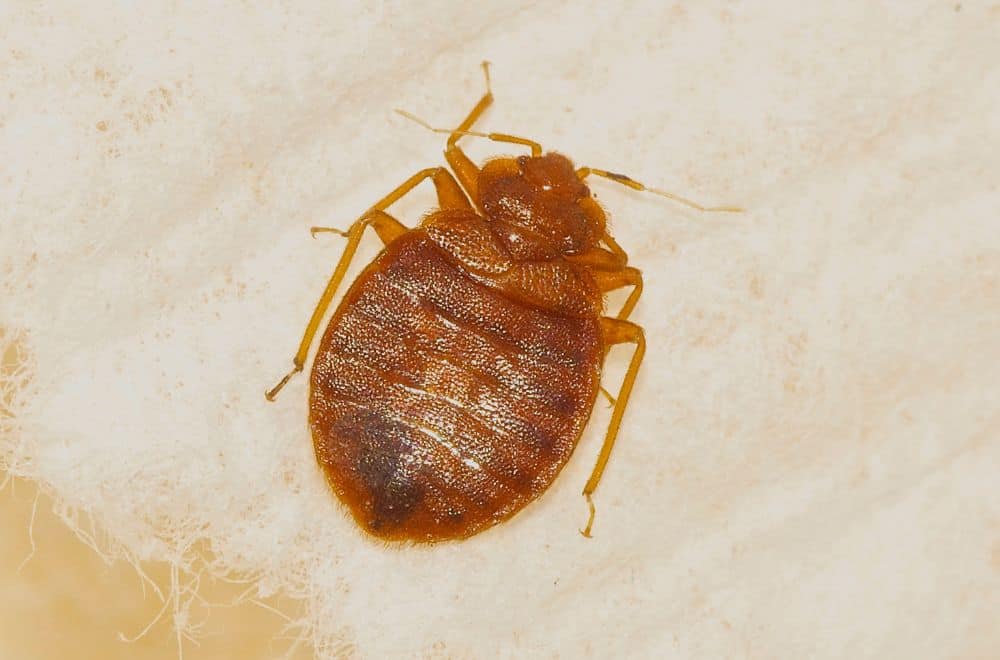When you jet off on vacation, the things you might hope to come back with include amazing photos, interesting souvenirs and lots of unforgettable memories – but something far less welcome that might accompany you back is bed bugs.
Most people have an idea what bed bugs are, but not everyone knows where they come from, how we pick them up or the conditions they prefer. So to help you understand more about these unwelcome pests, in this post, we answer the question, do bed bugs like the cold?
What are bed bugs?
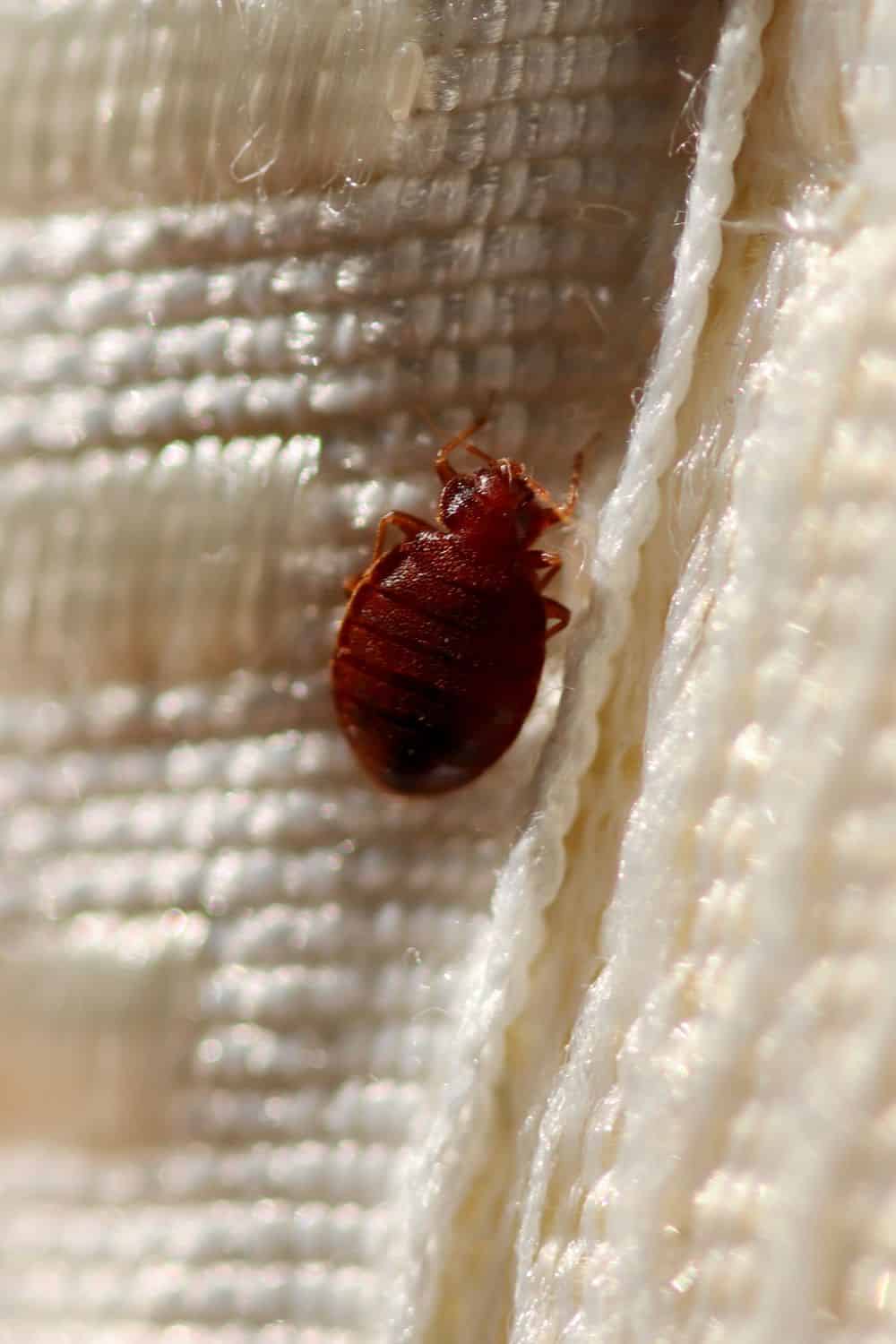
Since it always helps to know your enemy, let’s start by saying a few words of introduction about bed bugs – what are they exactly?
Bed bugs are parasitic insects of the genus Cimex, and several species belonging to this genus can be referred to as bed bugs.
However, the term “bed bug” is usually used to refer to the common bed bug (Cimex lectularius) and the tropical bed bug (Cimex hemipterus) – and in the North American context, you’re most likely to encounter the former.
They are small, usually around 1-7mm (0.04-0.28”) in length and reddish brown in color. They are usually flat, but after a blood meal, they swell up to a more bulbous shape.
However, although their bites can be itchy and often cause red marks and rashes, bed bugs are not considered dangerous since they are not known to carry any diseases.
How do they live?
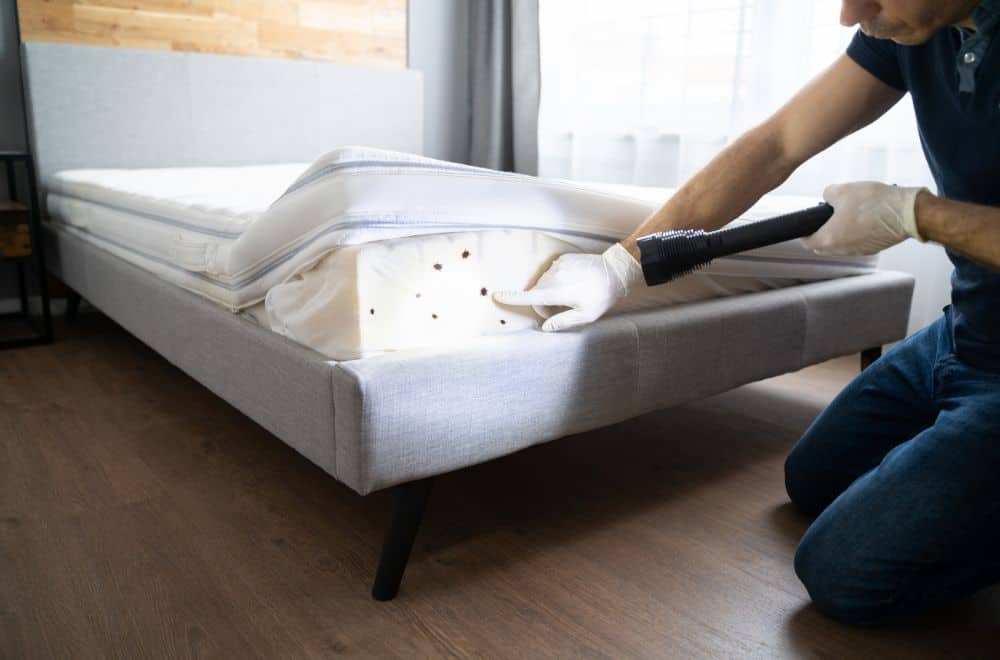
Common bed bugs and tropical bed bugs are closely related, and they share similar life cycles and lifestyles – and for both species, humans are their preferred hosts.
Both species go through five nymphal stages before reaching reproductive adulthood, and at least one blood meal is required before an individual can advance to the next stage.
They spend about four or five days to one week in each stage, meaning that in ideal conditions, they usually feed about once a week.
They prefer moderate temperatures and like to hide away in dark, secluded areas during the day. Their favored hiding places include mattress seams as well as cracks and crevices in walls, inside furniture and in gaps in the floor.
They then emerge at night to find a host, usually a sleeping human, to feed on the host’s blood. Their common name “bed bugs” comes from this tendency to feed on people while they sleep.
Once a female reaches maturity, she can lay two or three eggs every day for the rest of her life, which can last at least several months. For this reason, once they are present in your home, one or two bed bugs can quickly create a full-blown infestation.
How are they transmitted?
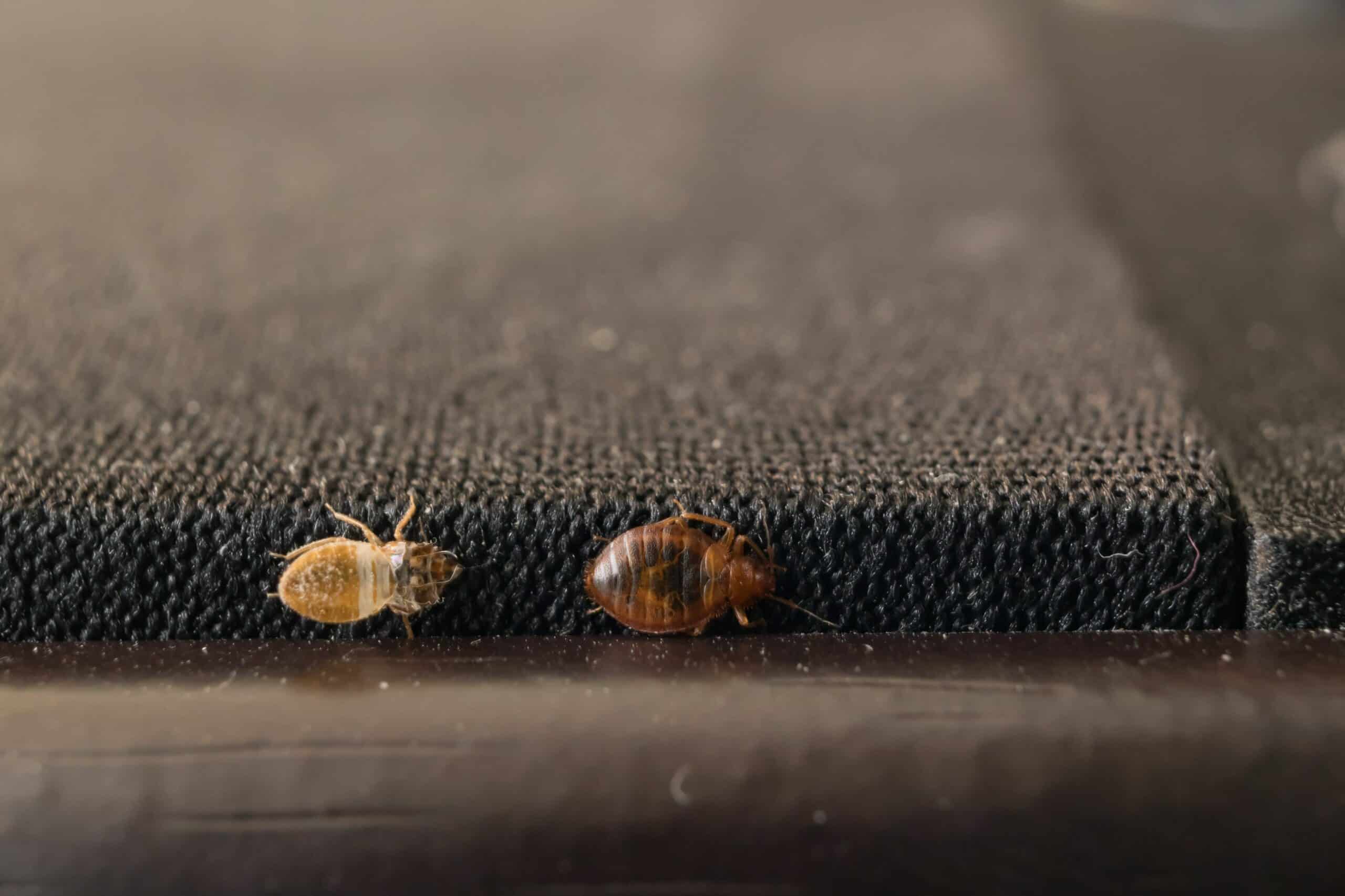
Image Credit: terminix
Unlike certain other parasitic species like fleas, bed bugs don’t jump from one host to another. Rather, they are carried by a host from one location to another, and then they crawl off the host and hide, waiting to emerge for their next meal.
They are commonly picked up in hotels, where they stow away in clothing or luggage or lay eggs there. Then, when the traveler arrives home, they crawl off into the new host’s home to start an infestation.
They can also be picked up on public transport, and nowadays, they are becoming increasingly prevalent in air transport too.
In fact, infestations of bed bugs are now thought to be rising globally after falling for many years, partly due to increasing international travel – and there’s usually a spike of infestations in the summer in the US, probably because that’s when most people are on the move.
Other than these methods, they can also be transported between locations on infected furniture, and sometimes they may crawl from one infected home to another nearby in search of their next meal.
So do they like the cold?
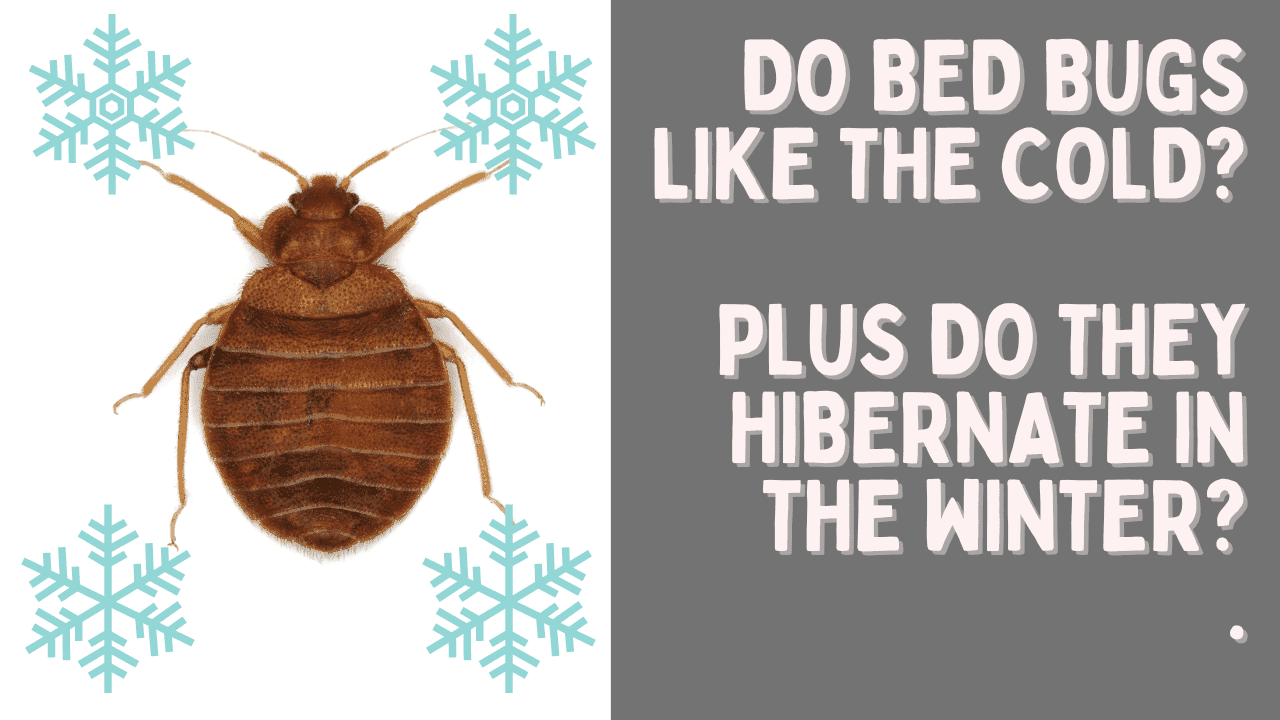
Image Credit: doctorsniffs
So now we know a bit more about bed bugs, let’s get back to our original question.
Do bed bugs like the cold? In a word, no.
Bed bugs prefer moderate temperatures that are not too hot and not too cold.
They are attracted primarily to the CO2 given off by our bodies, but also to our body heat. But they won’t actively seek out cold locations – and indeed, their eggs become non-viable at temperatures below 57°F.
But if we ask if bed bugs can survive in cold temperatures, we get a different answer – because yes, bed bugs can most definitely survive in much lower temperatures, so let’s look at this in more detail now.
Can bed bugs survive in low temperatures?
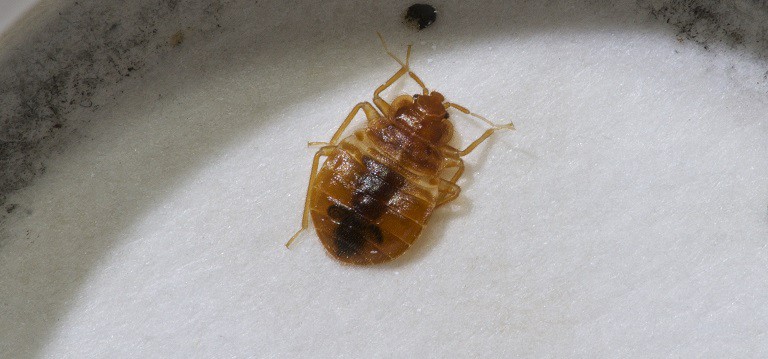
Image Credit: jcehrlich
Bed bugs enjoy the same kind of conditions we do, and when they take up residence in our homes that we heat in winter and cool in summer, they can continue to feed and breed year-round.
The optimal temperature for a bed bug is around 70-80°F, and at this temperature, they will reproduce prolifically and pass through each of the nymphal stages most quickly.
However, when the temperature drops, they have certain adaptations that allow them to survive.
At temperatures of around 50°F, bed bugs will stop progressing through the stages of their life cycle towards adulthood – instead, they will remain as nymphs until conditions improve.
Furthermore, at low temperatures, they can enter a state known as “diapause” that allows them to slow their metabolism and conserve energy until temperatures rise again.
Diapause can be triggered by temperatures as mild as 61°F, and in this state, they can even survive temperatures below freezing for several days.
Even at 0°F, a bed bug in diapause can survive for four or five days – and females are even hardier, being able to survive for this long in temperatures of -4°F.
This means bed bugs outside can easily survive a hard freeze overnight, and turning off the heating in your room for a few days will do absolutely nothing to help control an infestation.
Can you freeze bed bugs to death?
The fact that bed bugs are able to survive in low temperatures is important since it should now be clear that simply putting them in the freezer overnight won’t be enough to kill them.
It is possible to freeze bed bugs to death, and this is a popular technique – but unfortunately, if you want to get rid of bed bugs through freezing, you’re going to have to be a bit more patient.
For example, if you want to be sure that no bed bugs or bed bug eggs are left in your clothing, you’ll have to put the clothing in a plastic bag and place it in a freezer with a temperature of a maximum of -22°F for at least five days or even a week to be sure they’re all dead.
Temperatures not quite this cold may also kill bed bugs, but you’ll have to wait longer before you can be sure none have survived.
As well as clothes, you can also use this freezing technique on other things – but of course, it’s not advisable to leave valuable items like expensive electronic devices in the freezer for a week.
An old travelers’ trick
An alternative method for removing bed bugs from your clothes or luggage is to try this old travelers’ trick.
Rinse your clothes or luggage under a hot shower as thoroughly as you can, trying to wash any visible bugs out of the seams. If you see them coming out and landing on the floor, try to crush them – but if they get washed down the drain, that’s ok too.
Next, take your clothes and luggage outside and place them in direct sunlight – and the heat from the sun will cause the bed bugs to abandon your belongings to seek somewhere cooler and darker instead.
Of course, this only works if the temperature outside is hot enough, and if you try this in mild weather, the bed bugs will just stay exactly where they are.
Identifying bed bugs
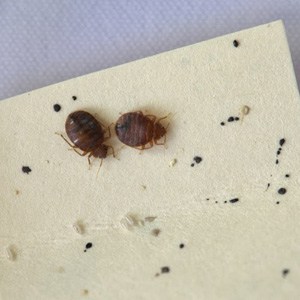
Image Credit: epa.gov
If you think you might be facing a bed bug infestation, the first thing you need to do is identify them. Then, once you are sure you know what you are dealing with, you can take the necessary steps to rid yourself of this most unwelcome of pests.
There are two ways to confirm that you are dealing with bed bugs, and these are to spot the bugs themselves and to identify the bite marks they leave on you.
-
The bugs
As we mentioned above, bed bugs are usually around 1-7mm in length and reddish-brown in color. Their bodies are flat when unfed, but they swell up to a more bulbous shape after eating.
They tend to stick together, so if you see one, you are likely to see others with it. They come out at night, and depending on the level of your infestation, many may emerge to feed once the lights are turned off.
However, once you turn the lights back on, they will scatter and run for cover – and when they run, their gait is similar to that of an ant.
As they scatter, they will head back to the mattress seams and other cracks and crevices where they were previously hiding.
-
The bites
If you have been bitten by a bed bug, the bite will usually show up as a small red spot on your skin.
However, since bed bugs live together, you are unlikely to be bitten by a solitary bug, and you will usually find lots of these red spots on various parts of your body, especially on places like your neck, wrists and ankles that are exposed while you sleep.
If lots of them feed close together, the dots can merge into red rashes, and the bites are likely to be itchy, wherever they are located.
Preventing bed bugs
Preventing bed bugs involves making sure you don’t carry them back with you after visiting somewhere they might be present.
If you have reason to suspect that a hotel or anywhere else you stayed was infested, change your clothes outside before entering your own home again – and try either the freezing or the sunshine method to remove any bed bugs that may still be in your clothes or luggage.
Alternatively, you can put your clothes in a drier to kill any bed bugs that are in them.
If you stay somewhere that might have bed bugs, you should also inspect the bed before sleeping in it and place your luggage on a raised platform so the bugs can’t access it as easily.
After staying somewhere for several days, if you start to notice itchy red spots on your body, it tells you there is probably a bed bug issue where you’re staying, so you should take extra precautions not to take any home with you.
Dealing with an infestation
Making sure you don’t carry any bed bugs home with you is extremely important since they are notoriously difficult to eradicate.
However, if they do manage to hitch a ride back with you, there are several measures you can take to get rid of them.
First, wash all your clothes at a high temperature of 60° or above to kill any bugs and eggs that are present there.
You should also wash your bedclothes at similar high temperatures.
Next, vacuum your bed and bedding thoroughly, along with any areas around it where they might be hiding. They might also be present in other rooms, so you’ll need to do the same there.
Steam treatments for furniture may also help you eradicate bed bugs since the high temperatures will quickly kill them.
However, attempting to starve them by leaving the room for a few days won’t work since they can survive for long periods without eating – you would need to vacate the room or perhaps the whole house for around a year to starve them all to death.
Not attracted to cold – but extreme temperatures can kill them
As we’ve seen, bed bugs are attracted to neither cold nor hot temperatures, preferring the same kind of moderate temperature we feel comfortable in – which is one reason they are drawn to our climate-controlled homes.
However, bed bugs can be killed by exposing them to extreme heat or cold, although in the case of freezing, this needs to last at least a week at very low temperatures – otherwise, they will go into diapause and then just emerge when the temperature rises again.
